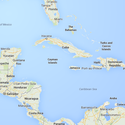-
About
- About Listly
- Community & Support
- Howto
- Chrome Extension
- Bookmarklet
- WordPress Plugin
- Listly Premium
- Privacy
- Terms
- DMCA Copyright
- © 2010-2025 Boomy Labs

 List Builder
List Builder
Listly by List Builder
Top Things to Do in Nagoya, Japan, from a Cruise Ship - Feel free to add, vote or provide feedback to the list
The Toyota Commemorative Museum of Industry and Technology , also known as Toyota Tecno Museum, is a technology museum located in Nishi-ku in the city of Nagoya, central Japan.
The museum houses the largest planetarium in the world and has three main sections on modern technology, life sciences and general science with a variety of hands-on exhibits. In 2012 much of the museum was renovated to coincide with the opening of the Planetarium.
Atsuta Shrine is a Shinto shrine traditionally believed to have been established during the reign of Emperor Keikō (71-130) located in Atsuta-ku, Nagoya, Aichi Prefecture in Japan. The shrine is familiarly known as Atsuta-Sama (Venerable Atsuta) or simply as Miya (the Shrine). Since ancient times, it has been especially revered, ranking with the Great Shrine of Ise.
The (リニア・鉄道館 ~夢と想い出のミュージアム~ SCMaglev and Railway Park Rinia Tetsudōkan: Yume to Omoide no Myūjiamu) is a railway museum owned by Central Japan Railway Company (JR Central) in Nagoya, Japan. The museum opened on 14 March 2011. The museum features 39 full-size railway vehicles and one bus exhibit, train cab simulators, and railway model dioramas.
Ōsu Kannon Station is an underground metro station located in Naka-ku, Nagoya, Aichi Prefecture, Japan operated by the Nagoya Municipal Subway's Tsurumai Line.It is located 7.8 rail kilometers from the terminus of the Tsurumai Line at Kami-Otai Station. It provides access to the Buddhist temple and tourist attraction of Ōsu Kannon.
The Higashiyama Zoo and Botanical Gardens is a joint zoo and botanical garden located at Chikusa-ku, Nagoya, Japan. It is open every day except Monday, and charges a modest admission fee. Established in 1937, the Higashiyama Zoo is one of Asia's largest attractions, featuring a botanical garden and an amusement park.
Nagoya Castle is a Japanese castle located in Nagoya, central Japan. During the Edo period, Nagoya Castle was the center of one of the most important castle towns in Japan- Nagoya-juku- and it included the most important stops along the Minoji, which linked the Tōkaidō with the Nakasendō.[citation needed ]
The Tokugawa Art Museum is a private art museum, located on the former Ōzone Shimoyashiki compound in Nagoya, central Japan. Its collection contains more than 12,000 items, including swords, armor, Noh costumes and masks, lacquer furniture, Chinese and Japanese ceramics, calligraphy, and paintings from the Chinese Song and Yuan dynasties (960-1368).
The JR Central Towers are located in Nakamura-ku in the city of Nagoya, central Japan. It is located at Nagoya Station and serves as the headquarters of the Central Japan Railway Company. It is the world's largest train station complex by floor area.
To celebrate the 50th anniversary of the art museum in 1985, nationwide fundraising lead by local economic organisations made possible extensive renovations and expansion of the museum. In 2004, aiming to unite many historical inheritances found in the region, the garden, a sanctuary of modern samurai culture representing Japan was built, along with a stroll-style pond to complete its atmosphere.
Official theme song for The Nagoya Dome, "Here For You", was written by local FM radio disk jockey, James Havens, and also released on CD by Victor Entertainment.
Sakae is an area in Naka-ku, Nagoya, Aichi, Japan. It refers to the areas around Sakae intersection, Sakae Station on the Nagoya Municipal Subway, and Sakae Station on the Meitetsu Seto Line. Sakae is located in the heart of Nagoya and as such is, along with Nagoya Station, one of Nagoya's main commercial districts.
The park has Yoshino cherry, Japanese andromeda, Japanese zelkova, Flowering quince, Tulip, Camellia, Thunberg spirea, Pearlbrush, Rapeseed, Common snapdragon, and Swamp chrysanthemum. Tsuruma Park is popular during the Sakura blossom viewing season in spring, as well as for outings and events such as the Nagoya Walkathon.
It is the oldest TV tower in Japan, and was completed in 1954. It is located in the centre of Hisaya Ōdori Park. The tower is 180 metres high, and has two main observation decks at the heights of 90 metres (the indoor Sky Deck) and 100 metres (the outdoor Sky Balcony).
The Aichi Arts Center is the main venue for the performing arts in Nagoya, Aichi Prefecture, Japan. The center consists of: Aichi Prefectural Museum Aichi Prefectural Arts Theater Aichi Prefectural Arts Promotion Service Aichi Prefectural Library Oasis 21 is located right in front of the building.
The museum operates a 4,700 square meter (50,590 ft²) facility on three levels, including 1,400 square meters (15,069 ft²) of exhibition galleries. The architecture of the museum is contemporary but nonetheless meant to reflect that of the neoclassical MFA building in Boston, especially its white granite facade.
The (日本銀行金融研究所貨幣博物館 Currency Museum of the Bank of Japan , formally known as the Currency Museum, Institute for Monetary and Economic Studies, Bank of Japan Nihonginkō-kin'yū-kenkyūjo-kahei-hakubutsukan) is a museum about Japanese currency located in front of the Bank of Japan building in Chūō, Tokyo. The museum opened in November 1985.
The Port of Nagoya , located in Ise Bay, is the largest and busiest trading port in Japan, accounting for about 10% of the total trade value of Japan. Notably, this port is the largest exporter of cars in Japan and where the Toyota Motor Corporation exports most of its cars.
The museum is sponsored by Chubu Electric Power and was opened in 1986. The museum houses on the first four floors the history and development of electricity, and the usage of it throughout time until today. It also houses a concert hall and auditorium in the upper floors.
